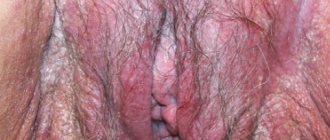The most crucial period of every woman’s life is the nine months of pregnancy. And it is completely natural that tangible and intangible changes begin to occur in her body.
Often, not knowing what is associated with certain sensations or symptoms, the expectant mother begins to worry and worry.
Pregnancy is a very complex physiological process and therefore every woman reacts warily to any changes in her condition. The sudden onset of frequent discharge can frighten the expectant mother. But don’t worry, this is considered a completely normal and common occurrence during pregnancy.
The fact is that during this period the cervix is closed with a mucus plug. It prevents infections and enters out a few days or even hours before the onset of labor. That is why during this period the amount of discharge may increase slightly.
However, you need to know what discharge is considered normal during pregnancy?
Causes of discharge during pregnancy
Women themselves do not notice how they encounter minor discharge every day.
According to medical indicators, a healthy cervix always secretes the necessary secretion to moisturize the vaginal walls and maintain normal microflora in the genitals.
We recommend reading: Changes in a woman’s body during pregnancy, Painless childbirth, Pyelonephritis in pregnant women
But as soon as the consistency of this secretion changes, the smell appears and the color changes. This may indicate the appearance of some kind of infection in the body or the development of diseases of the genital organs - for example, endometritis. This disease involves inflammation of the cervical mucosa. It can be quickly treated, but not during pregnancy. Sometimes many medications or surgical interventions can negatively affect the birth itself or the development of the child. Therefore, doctors prefer to first wait until the patient gives birth.
The causes of discharge during pregnancy can be completely different:
Immune infection. Pregnant women during this period are prone to frequent colds; their immunity is too weak to prevent infections.
Internal entry of bacteria. Women mistakenly think that if the cervix is closed by a mucus plug, then no infection can get there. Pathogenic bacteria can be acquired through sexual contact.
Lack of hygiene. It is necessary to shower frequently without using strong aromatic soaps, reduce the number of sanitary pads in order to avoid the “greenhouse effect” reaction on the organs and prevent fungus from multiplying, etc.
Discharge from a healthy woman
- If a woman is healthy, the discharge may be clear, moderately white or yellow.
- The discharge should not be abundant or irritate the mucous membranes of the vagina and genitals.
Discharge from a healthy woman. They are odorless and transparent or white.
Usually, in a healthy woman, discharge does not cause any discomfort and is natural.
- Discharge from a healthy woman has the consistency of mucus or water and does not have any impurities or odor.
- Sometimes a sour odor may be present, but this does not indicate illness.
- During pregnancy, especially in the early stages, discharge may become profuse and thick, odorless, but this also does not indicate illness, but is only a sign of the onset of pregnancy. It is at this moment that secretion is increased, so the discharge can be more pronounced.
- Sometimes women in early pregnancy may experience a significant increase in discharge, but this should not be a cause for concern if it is whitish or yellow, has a thick mucous form, without any particular odor or itching in the vagina. During the changes that begin to occur in a woman’s body, the discharge also changes, only confirming that conception has occurred.
White discharge during pregnancy
A pregnant woman must take care of her health, because she is carrying her whole life within herself. Any new changes should be identified as quickly as possible and tests taken.
The most common symptom of discharge in pregnant women is thrush. This is a cheesy, white discharge with an unpleasant beer odor.
With erosion of the cervix, the discharge has yellow-brown shades.
Particular attention should be paid if a pregnant woman has white-pink discharge. This may indicate the presence of an ectopic pregnancy or a threatened miscarriage. The woman may feel slight pain in the lower abdomen. You need to inform your doctor as soon as possible or call an ambulance.
White discharge in late pregnancy
During later stages of pregnancy, white vaginal discharge may become more abundant. Often in the mornings immediately before the onset of labor, a pregnant woman can be detected in increased quantities, which are called precursors of labor. If such discharge is not accompanied by pain, there is no cause for concern. If you begin to notice clear discharge that has been oozing for several hours, even if the time for labor has not yet come, then there is a possibility that your water has started to break. In this case, you should go to the maternity hospital, where you will be examined by specialists.
White, odorless discharge during pregnancy
White transparent discharge may indicate a change in hormonal levels. When a woman first finds out about her interesting situation, no test is needed for this. Hormonal changes are the reaction in the form of discharge.
No additional treatment is required in such cases. Only hygiene procedures - careful hygiene several times a day, comfortable underwear made from natural fabrics, use of panty liners.
Thick white discharge during pregnancy
During the first 3 months of pregnancy, the strongest hormone, progesterone, rages in a woman’s body.
It helps keep the embryo in the uterus. It is under its influence that a mucous plug is formed that covers the cervix. From time to time, a woman may notice traces of discharge on her underwear. These can also be clots in several quantities. However, these discharges do not cause any discomfort at all.
In the second trimester, a woman's pregnancy is influenced by another hormone - estrogen. At this stage, the mammary glands also enlarge and the body prepares the woman to produce milk.
White discharge after 10 weeks
After examination on the gynecological chair, short-term, painless bleeding may occur, which indicates erosion of the cervix: the already loose tissue of the uterus is damaged. There is still a threat of miscarriage, so painful discharge with blood should be alarming.
12-13 weeks. At the end of the first trimester of pregnancy, leucorrhoea is light in color, moderate in intensity, and odorless. The appearance of pus, staining of discharge, increased volume, pain - symptoms of detachment of the fertilized egg from the uterus, cervical erosion, placenta previa, damage to the uterine cavity.
14-18 weeks. The formation of individual organs in the fetus has almost finished, the placenta has formed, and by the end of this period the woman usually feels the baby moving. Colorless secretions with a thin consistency are normal.
19-36 weeks. Stable period - normal is moderate, whitish, thin consistency. The possibility of leakage of amniotic fluid due to watery vaginal discharge will be determined by a specialist.
37-40 weeks. The release of the mucus plug and the proximity of childbirth - hence the mucus and bloody clots. Abundant liquid white discharge at 38 weeks of pregnancy may indicate the onset of labor and a reason to go to the maternity hospital. Liquid, cloudy leucorrhoea accompanies the discharge of amniotic fluid or indicates depletion of the membranes. In the last month you need to be especially attentive and vigilant; it is better to play it safe and seek help from a doctor.
White liquid discharge during pregnancy
Milky discharge with a liquid consistency does not always indicate that there are health problems.
This nature is sometimes difficult even for a gynecologist to determine whether discharge is normal or associated with some disease. The main thing is that this discharge does not have a strong odor and is not accompanied by other symptoms such as itching or burning when urinating. Such phenomena can occur before the birth itself, several days before the approaching date.
We also recommend reading: Fetal movements during the second pregnancy
It is important to remember that discharge always becomes an excellent breeding ground for many bacteria. For a pregnant woman, this is a huge risk of giving birth to a healthy baby. Therefore, it is necessary to avoid stressful situations, “and bacteria love this very much,” and change underwear and pads as often as possible.
Liquid discharge:
- abundant and have a liquid composition;
- with the smell of rotten fish.
Such phenomena may indicate microflora disorders, reduced immunity, and raging hormones.
Bacterial vaginosis usually occurs with a minimal set of symptoms:
- slight itching or burning in the genital area.
If the disease is not treated in a timely manner, it can develop into a significant weakening of the immune system and cause an inflammatory process, which already requires extensive antibacterial therapy and takes a long time to be treated.
Causes of liquid discharge:
- sexual infections;
- various infectious and inflammatory diseases.
There are cases when bacteria fill the body even before pregnancy. That is why doctors always advise women to plan their pregnancy, undergo the necessary examination, take tests and a smear in the laboratory.
Often, the disease can be asymptomatic, hidden, and at one point it can worsen and all inflammatory processes immediately manifest themselves.
For example, gonorrhea. It occurs in a latent form, and with inflammation, a liquid discharge with a yellow-green tint begins. Or chronic trichomoniasis does not have pronounced symptoms throughout the entire disease, but during an exacerbation, foamy whites of a yellow hue are released, accompanied by severe itching and burning with each urination.
Cause for concern and consultation with a specialist
When the character or color of the leucorrhoea changes dramatically, you should consult a specialist. Sticky, yellow mucus, lumpy or flaky discharge indicate a disease, which only a gynecologist can confirm. Discharge may change if:
- weakening of the immune system,
- fungal infections,
- diseases of the genitourinary, birth system,
- cervical erosions,
- anemia,
- constipation
A gynecological examination is also advisable if a woman has 39 weeks of pregnancy, white liquid discharge has become abundant and prolonged. The approaching birth, changes in hormonal levels - all these are signs that the expectant mother herself will not be able to determine without the help of a doctor. In any case, unnecessary worry is harmful to the health of the mother and her unborn child: treatment is carried out after a laboratory test and examination by a doctor. A visit to the gynecologist in such situations is strictly necessary.
Brown discharge is also dangerous. Against the background of hormonal fluctuations, they, like light ones, may be within normal limits, but you should still notify your doctor about this.
A noticeable change in their character or color may be a warning sign:
- risk of miscarriage,
- ectopic pregnancy,
- placenta previa and abruption,
- infectious disease (and together with a high body temperature of a pregnant woman - infection of the fetus),
- pathology of the cervix,
- discharge of the mucus plug.
Quite often you can hear that the color of the discharge may differ from white; read about such discharge here.
https://youtu.be/qqBR_7hVDnI
Causes of yellow discharge
Exacerbation of any inflammatory process.
Pathogenic bacteria penetrate the vagina, multiply, and the genitals become inflamed.
A quick reaction is necessary to prevent spontaneous abortion.
In addition, dark yellow discharge may indicate an allergy, for example, to new intimate hygiene products.
If the discharge turns greenish after some time, this indicates more serious diseases, for example, sexually transmitted diseases.
If there is yellow discharge from the genitals, this indicates possible inflammation of the uterus, ovaries, or an advanced bacterial infection. In this case, the discharge may have a strong unpleasant odor. This is very dangerous during pregnancy, since with inflammation of the reproductive system, a woman can not only lose her unborn child, but also give birth to a baby with various health defects.
Diagnosis of discharge in a pregnant woman
In order to accurately determine the diagnosis, you do not need to rely only on the appearance of the discharge itself. To do this you need:
- Get examined by a gynecologist.
- Take a smear test.
- Do a PCR test for internal infections and sexually transmitted diseases.
- Get a blood test for sexually transmitted diseases.
- Conduct an analysis of the acidic environment of the vagina.
Only based on the results of these studies can a doctor make a diagnosis and prescribe an effective treatment regimen that is safe for both the health of the mother and the fetus.
Treatment of discharge during pregnancy
Normal clear discharge that has no odor and does not cause discomfort does not require any treatment. Such a reaction of the body does not pose a threat to either the health of the woman or the fetus. After childbirth, the body will recover and the discharge will disappear on its own.
Bacterial infections in a pregnant woman are very difficult to treat. Therapy with drugs is prescribed to suppress this bacterial flora; the patient should spend more time in the fresh air and eat a healthy and balanced diet.
Infections in the genital organs must be treated immediately, since the child himself can become infected during childbirth. In addition, it is unknown how the development of infection will affect the fetus.
Only a gynecologist can draw up a treatment regimen and prescribe medications that will quickly bring the desired effect. A pregnant woman's body may, due to its position, not take certain medications. In addition, constant monitoring of analyzes is required.
Discharge of a non-inflammatory, infectious type, such as thrush, is usually treated with ointments, suppositories, and cream.
But there are no less effective treatment recipes from the field of traditional medicine, such as soda and salt solutions, herbal decoctions, etc.
We also recommend reading: Sagging belly during pregnancy
For example:
Thin white discharge early in pregnancy
Anna, 24 years old (Ekaterinburg): “The 6th week of the gestational period has now ended.
At first there were no suspicious symptoms, but a couple of days ago, whitish water began to appear instead of leucorrhoea. There is quite a lot of it. What could it be? What is the reason for thin white discharge at 7 weeks of pregnancy? Natalya, 25 years old (Moscow): “This morning I noticed that I was having a lot of white liquid discharge at 8 weeks of pregnancy. They do not look like the usual leucorrhoea. At the same time, there is a slight itching and a slight tug in the lower abdomen. I'm in my eighth week. What could they mean? White liquid discharge during the entire period of pregnancy, including when it is only the sixth or eighth week, is an alarming factor. Their appearance may be associated with the onset of an inflammatory process or the penetration of an infection.
Creamy discharge
Normal leucorrhoea
Such a development of events is especially likely when there are additionally sharp or nagging pains in the area of the sacrum or lower abdomen.
Another reason why thin white secretion may appear during pregnancy is an allergic reaction. The mucous membrane lining a woman's external genitalia becomes especially susceptible to external irritants. A sanitary product, washing powder, or too tight synthetic underwear can be a provocateur. In such a situation, itching and irritation may be present, but pain should not be observed.
In rare cases, increased liquid white discharge during early pregnancy becomes a signal of unfavorable fetal development or the threat of imminent spontaneous abortion. You should be especially careful in a situation where any pain in the abdominal area or general malaise is simultaneously noted. In this case, you must immediately seek medical help.
Clotrimazole ointment
This is a remedy for external use, which in most cases is used for discharge to quickly relieve itching and burning. These symptoms can cause severe inconvenience, especially in crowded places. It is enough to carry out several procedures during the day “about 5-6 times” and by the evening you can feel a little relief.
What should normal discharge be like in early pregnancy?
In early pregnancy, light or white discharge is considered normal. They accompany hormonal changes in the body preparing to bear a child.
A small amount of colorless, odorless leucorrhoea without impurities appears after the embryo is fixed in the uterine cavity. To protect the embryo from infection, a mucous plug forms on the cervix, the secretion of the organ increases, and white discharge appears.
Why is the volume of discharge decreasing? At the very beginning of pregnancy, progesterone is actively produced. The participation of the hormone in fixing the embryo in the wall of the uterus and the formation of the placenta leads to the formation of viscous, thick, colorless discharge.
Up to 12 weeks, healthy discharge is considered to be one that meets the following criteria:
- Color. Transparent, light or whitish.
- Consistency. Thick, viscous, slimy.
- Structure. Homogeneous without lumps, curdled flakes, or bloody inclusions.
- Smell. Light sourness is allowed.
- Feel. There is no discomfort in the form of itching and burning, pain and swelling of the vaginal mucosa.
READ ALSO: Why may greenish discharge appear during pregnancy?
Herbal infusions
Herbs such as oak bark, thyme, celandine, and chamomile can be used as a medicinal source. For more effective results, you can use a collection of herbs. To do this, you need to take equal proportions of herbs “about 1 teaspoon each” and pour two glasses of boiling water, let it brew for about an hour, cool and strain. Douching should be carried out identically using an ordinary pharmaceutical bulb.
Tea tree oil treatment
This is an antifungal agent. As a base, you can take any vegetable oil “peach, almond, olive and regular sunflower”. Add 4 drops of tea tree oil to 20 ml of any oil. Dip a tampon in the resulting oil mass and insert it into the vagina, or you need to dip your paste and lubricate the walls of the mucous membrane yourself.











